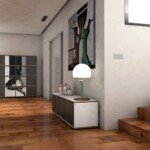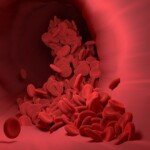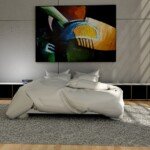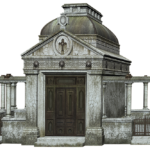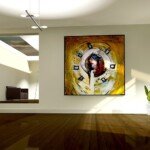In-depth study: Malyan 3D Printer – Comprehensive User Reviews
The world of Desktop 3D printing has a wealth of choices, and Malyan printers often serve as a competitor for promising affordability and functionality. This review took a lot of time to put the popular Malyan model (such as the M150 or M200) at its pace by its speed, aiming to provide clear, honest assessments to evaluate what it has to offer and its place in the bustling FDM (Fused Secodition Modeling) market.
First impression and build quality:
When the Marians were disassembled, the construction quality was balanced. Although there is no industrial-grade fence like some premium brands, the frame (usually aluminum) feels solid. The assembly process usually follows common "Main assembly" Path – Connect the gantry, install the printing bed and wiring. The instructions sometimes feel a little sparse or awkwardly translated, suggesting some patience, and perhaps seeking online tutorial support (Thingiverse or various 3D printing forums are Goldmines). Overall, it feels like a capable machine built for a price point, offering core essentials without the extravagant features.
Settings and User Experience:
Getting started involves leveling the printing bed – a key step common to all FDM printers. Many of the Mali models’ screw-based levels work properly, but can be a touch challenge compared to the auxiliary level system. Software interaction is usually done through a standard LCD interface and SD card slot. The slicing software (such as Cura or Prusaslicer) works well and requires you to enter the specifications of Malyan. Connectivity is functional (USB/SD card), although there are usually no more modern options on older/entry models, such as Wi-Fi. Configuration is not particularly difficult, but full newcomers may prefer printers with more guidance settings.
Performance: Where rubber meets the road
Here is where Mariyan printers really reveal themselves:
- Printing quality: With careful calibration (in bed, nozzle height, temperature and printing speed), the Marians can produce very considerable prints. The details solution is good, especially for the class. The layer adheres well in the correct setup. Some visible layer lines – features of FDM – are expected, but the finish can be smooth. For prototypes, hobby projects and functional parts (typical and good calibration) that do not require extremely high tolerances can usually accept dimensional accuracy. Printing speed is standard in the category; push can lead to quality compromises.
- Reliability and noise: Once called, the Marleys can be the main force. However, achieving a “dial-in” state can sometimes involve more trials and errors than more expensive machines. Moderate noise levels – Fans and stepper motors generate recognizable 3D printer buzz, best suited for workshop or non-Quiet rooms. For materials such as PLA, PETG, and TPU, cooling performance is sufficient, although printing challenging materials such as ABS may require enclosure (not always standard).
- Ecosystem: The filament has extensive compatibility and supports PLA, ABS, PETG, TPU, etc. with a standard diameter of 1.75mm. Open source firmware (such as the Marlin variant) has flexibility. Community support through the forum is an important advantage – many users share solutions to setup profiles and solve common problems.
Pros and cons at a glance:
- advantage:
- price: There is no doubt that one of its strongest points – provides important printing capabilities for costs.
- Solid printing quality: Ability to produce high-quality prints through careful setup and calibration.
- Large Community: A strong user community provides valuable troubleshooting and upgrade resources.
- Open Platform: Due to common components, easy to modify, upgrade firmware and patches.
- Decent build volume: Models like the M200 provide a considerable build volume for the price.
- shortcoming:
- Initial calibration: It can be picky and time consuming, especially for beginners. Upgrades can be frustrating.
- document: Instructions can be minimized or poorly translated.
- Noise level: Bigger than some modern competitors, especially when used in shared spaces.
- Create quality nuances: While the interior is solid, the exterior panels or parts may not feel stronger than the quality brand.
- Lack of advanced features: Conveniences are often lacking, such as automatic beds, filament sensors, or Wi-Fi.
When metal enters the equation: Beyond plastic
Although the Marleys effectively convert plastic filaments into physical objects, it has a fundamental limitation: it cannot be printed in metal. For engineers, medical professionals, aerospace innovators or anyone who needs it High strength, complex or heat-resistant metal partsFDM prints hit the wall. This is a professional place Metal 3D printing service Become essential.
This is exactly the wide gap.
Consider great scope when your project requires:
- Durable end-use parts: Components requiring high strength to weight ratio, wear resistance or thermal stability (e.g., engine mounts, surgical tools, heat exchanger parts).
- Complex geometric shapes: Complex designs with internal channels or lattice structures cannot be subtracted or implemented with plastic FDM.
- Material characteristics: Specific features of titanium (TI6AL4V), stainless steel (316L, 17-4PH), aluminum alloy (ALSI10MG), nickel superalloy (Inconel) or cobalt chromium (CoCRMO) are required.
- Accurate and certified: Applications of tight tolerances, repeatable mechanical properties and material traceability are required.
Why choose Greatlight?
- Advanced equipment: Utilize the latest DML (Direct Metal Laser Sintering) and SLM (Selective Laser Melting) technologies to achieve unparalleled accuracy and partial integrity.
- Expertly made: A deep dive into the complexity of metal AM – designs for additive manufacturing (DFAM), layer by layer laser fusion, heat treatment, pressure relief.
- One-stop post-processing: In addition to printing, Greatlight offers expert finishing: precise CNC machining for critical features, complex support removal, surface grinding, polishing, shooting, pe-solidation, heat treatment and quality inspection.
- Material mastery and customization: Extensive material portfolio and the ability to use custom alloys or unique requirements.
- Speed and value of optimization: Simplifies the process from citation to delivery, ensuring fast turnaround and competitive pricing without compromising the critical quality required for demanding applications.
In short, use your Malyan for excellent functional thermoplastics, rapid prototyping and creative efforts. When metal is a material of necessity and properties, Greatlight provides industrial-grade expertise, technology and reliability for your most demanding production needs.
Conclusion: Marian Judgment and Metal Grade
Malyan 3D printers offer budget-conscious manufacturers, hobbyists and educators a compelling case that ventures into FDM printing. It is very accessible at a price of obvious 3D printing capabilities. Its strengths lie in its core printing potential (after calibration), a large and supported community, and an open patching platform. However, it initially requires patience and lacks the polished user experience and advanced features found in high-priced machines.
The Marians have great value for plastic parts, drafts, prototypes and non-critical functional parts. However, for projects that require the unique properties and structural integrity of metals, the inherent technology of the Marians reached its limit. Professional metal 3D printing services such as the cutting-edge equipment provided by Greatlime, deep material knowledge and comprehensive post-processing capabilities are the ultimate solution. Learn about this department – prototyping/plastics with access to desktops (like Marians), and production-grade metal parts with dedicated service offices (like Greatlight) – ensures that you choose the right tool for each requirement.
FAQ (FAQ)
Q: Is Mariyan a good printer for beginners?
one: Probably due to its low price. However, the initial calibration and setup process can be challenging for absolute beginners who may find printers with features like automatic bed level (e.g., Ender 3 S1 Pro, Prusa Mini). Patience and willingness to learn are the keys to starting with the Marians.
Q: What are the most common problems with Maliyan printers?
one: Common challenges include bed difficulties, extruder jam (sometimes needing adjustments or upgrades, such as all-metal heat tables at higher temperatures), inconsistent print adhesives (by appropriate levels, adhesives such as adhesive rods/hair) and occasional adhesive/hair rods) and occasional component QC for controlled or power supply. Community forums are an excellent resource for solutions.
Q: Can Marians print materials like ABS or flexible TPUs?
one: Yes, but there are warnings. ABS requires a well-calibrated, draft-free environment due to warpage (usually fences are required). Printing flexible TPUs (thermoplastic polyurethane) often requires a significant reduction in printing speed and ensures that the extruder path (the Bowden tube setup on some Marleys) is very smooth to prevent buckling. PLA and PETG are usually the simplest and most reliable on these machines.
Q: Why can’t I print metal on a plastic FDM printer like Mariyan?
one: FDM printer melts thermoplastic wire. Metal printing requires dramatically different techniques, such as DMLS or SLM. These methods selectively fuse metal powder particles layer by layer using high power lasers to reach temperatures far exceeding what any FDM heat table can handle and require a controlled inert atmosphere to prevent oxidation. Equipment and processes are fundamentally different and more complex.
Q: When should I use the metal 3D printing service like Greatlimex?
one: Consider great when your project needs it:
- Functional parts are subject to high pressure, heat or wear.
- Complex geometry (internal channels, lattice) cannot be achieved through machining.
- Specific mechanical, thermal or biocompatible characteristics are only provided by metal alloys.
- Small volume production batches requiring metal durability.
- Parts requiring high dimensional accuracy, surface surface standards or material certification.
Q: How is Greatlight’s metal 3D printing service handled and completed?
one: Greglight provides experts Design of Additive Manufacturing (DFAM) Supports parts to optimize metal AM processes. After printing, they provide a comprehensive Post-processing of certificationusually including: precise support removal, CNC machining, for key features and tolerances, heat treatment (annealing, pressure relief), surface finishes (grinding, polishing, polishing, bead explosion, shooting tin plating) and rigorous quality inspection. They manage the entire journey from design intent to ready-made metal components.
Q: How do I start with the Greatlight of metal parts?
one: The process is designed to be simple. Submit your CAD files and requirements through Greatlight’s portal (or contact directly). They will review the design, provide DFAM consultation if needed, provide quotes, suggest the best materials and processes, handle the entire print and post-processing workflow, and provide prepared parts for their scheduled applications.



